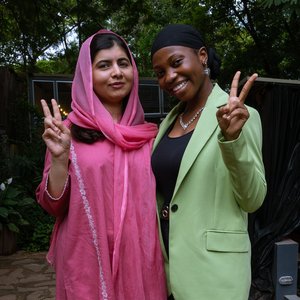Increasing Black students’ access to STEM careers starts in the classroom
(Courtesy of Tabitha Willis)
For years I’ve been working to make it easier for the next generation of Black students in Chicago to study STEM — but I can’t solve this problem alone.
I fell in love with the escapism of books at a very early age. Books like “The Magic of Reality” by Richard Dawkins and Dave McKean and “Revelation Space” by Alastair Reynolds fueled my curiosity for science and love for creativity. However, my love of reading and learning never translated to the classroom.
During my K-12 career, I attended eight different schools in the Chicagoland area. At each school I was met with staff who not only didn’t understand their Black student bodies but also blamed us for the schools’ low test scores. Because I had speech and hearing complications coupled with learning difficulties, teachers instantly wrote me off as a “problem child,” someone meant to be forgotten in the school system.
I felt weighed down by the low expectations placed on me, frustrated knowing that I could excel intellectually if given the chance. Instead of being encouraged to become the person I knew I could be, I felt as if I wasn’t even given the opportunity to show who I truly was as a student or individual. I was just another student no one believed in — except for my father.
(Courtesy of the Buckeye Leadership Fellows Program)
Although my father worked two jobs to support our family of nine, he converted our small family room into a classroom, refusing to let me fall behind. He taught me advanced math and science but most importantly he taught me the power of knowledge and to channel the frustrations I felt in school into my academic performance. He encouraged me to not only improve my speech but to excel in all aspects of school. My father was the first person to see my potential. At a time when I couldn’t advocate for myself, he advocated for me.
I remember being in a parent-teacher conference and my grade school math teacher stated I would never be as smart as my White male peers. My father asked, “Is it not enough for her to get an A or be the first one to class or stay late to ask questions? Do you not see that or do you only see that she’s Black?”
This wasn’t the first time I experienced discrimination from a teacher and it definitely wasn't the last as I experienced similar sentiments from my peers. However, I carried this moment with me into high school. As my passion for science developed and I found myself applying to work at Chicago’s science institutions, I had a nagging feeling that I didn’t belong. I was often the only person of color interviewing. When I began interning at these incredible places, there were scientists who wouldn’t look me in the eye and peers who dismissed me as a way to meet a diversity quota.
I realized early on that I would have to work 10 times harder than anyone else if I wanted to one day be able to increase representation and access to STEM in Chicago. So that’s what I did. In my many different leadership positions I’ve worked to break down the barriers preventing other Black students from pursuing careers in STEM. As a lead mentor on the Field Museum’s Youth Council, I increased the museum’s marketing in underrepresented minority neighborhoods so more students learn about and apply to the museum’s STEM programs. With funding and coaching from the Obama Foundation Community Leadership Corps, I started an initiative that provides mental health and wellness resources to minority communities in Chicago. Through this project, I was able to work with inner city youth to break down the stigma surrounding mental health and wellness. I also served as a Steve Harvey Disney Dreamers Academy Mentor Champion where I was able to advise and mentor young students, emphasizing the importance of diversity in STEM fields.
“I realized early on that I would have to work 10 times harder than anyone else if I wanted to one day be able to increase representation and access to STEM in Chicago. So that’s what I did. ”
For years I’ve been working to make it easier for the next generation of Black students in Chicago to study STEM — but I can’t solve this problem alone. I believe increasing minority access to STEM careers starts in the classroom. Teachers must give Black students the opportunity to see themselves as engineers, scientists, doctors and more by creating curriculum that highlights the contributions the Black community has made in STEM fields. There is also a dire need for companies and institutions to reach out to minority institutions to recruit talented students of color. It is not enough to encourage diversity if programs don’t take active purposeful steps to bridge the gaps placed in our society by institutional racism.
And finally, the most important way to increase and maintain diversity in STEM is to listen to Black voices. Understanding and amplifying the experiences of Black students and professionals is the only way we can change the landscape of STEM fields.
 Read more
Read more













